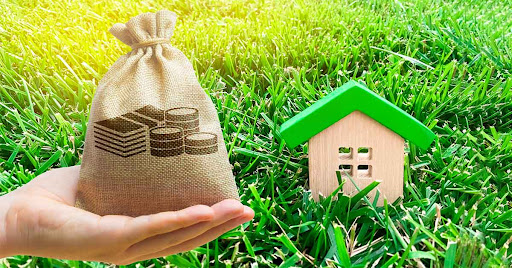If you come across a plot for sale that you believe would be ideal for your future house, an HDFC plot loan might help you capitalize on the chance. Plot loans, as opposed to home purchase loans, which are used to acquire existing, built-up properties, allow you to purchase land. An HDFC plot loan can be used to purchase land on which you will develop a house in the future.
Tenure: Land loans have a shorter repayment period than home loans. Home loans have one of the longest loan repayment terms, which can be up to 30 years. ” Land loans have a maximum duration of 15 years.
What could be purchased?: Home loans can be used to buy any sort of house in any location where HDFC plot loan have specific constraints. In India, one of the limits on plot loans is that they cannot be used to purchase agricultural land. For example, you may be able to obtain a land loan just for residential usage rather than commercial use. Furthermore, the plot’s location must be within the boundaries of a municipality or corporation within the state. As a result, you cannot use plot loans to purchase agricultural land, a plot in a village, or a plot in an industrial region.
Application process: Aside from that, applying for and receiving permission for a HDFC plot loan is relatively simple. In most cases, your application will be granted within a week. To apply for a land loan, you must be at least 18 years old and no older than 70 years old. Another rule for obtaining a plot loan is to have specific plans to build a property on that plot. The lender will only give you the loan if you guarantee to start building within a certain time frame once the money is disbursed.
Loan to value ratio: The loan to value (LTV) on a land loan is not the same as the LTV on a home loan. Many borrowers receive up to 90% of the property’s worth as the loan amount for a home loan; however, the loan amount is lower for a land loan. If the property’s value is less than 75 lakhs, your loan amount can be as much as 90% of the property’s value. As the property’s value rises, the maximum loan coverage falls to around 75%. It is, however, better to consount when planning to buy land with a loan and to save at least 30% or more for a downpayment.
Difference Between Home Loan and Plot Loan Before You Start the Application Process
Lenders consider land loans and home loans differently when it comes to obtaining a loan to purchase a property. If you intend to buy land to build a house, you need to understand how a land loan differs from a home loan. Continue reading to learn the fundamental distinctions between a land loan and a home loan.
Eligibility: While NRIs can easily obtain a home loan, only resident Indians are eligible for a land loan, which is not available to NRIs.
What kinds of property are eligible? When it comes to the types of properties that would qualify for a loan, home loan lending rules are extremely varied. However, when it comes to plots, lending is extremely limited and limited to specific types of land. Typically, lenders fund lands allotted by development authorities
Location of the property: While a home loan can be obtained for a property that happens to be outside of the municipal area, village or industrial area is not normally eligible for a land loan. It should be located inside the corporation’s or municipality’s boundaries. The said land should also be clearly demarcated, so a boundary wall is required.
Interest rate: Home loan interest rates and HDFC MCLR Rate are among the lowest. However, the same isn’t The same cannot be said for the land loan, which has a higher interest rate. The HDFC MCLR Rate on a land loan is 0.50% – 1% higher than the interest rate on a home loan. For women borrowers, the interest rate on a home loan from HDFC or SBI starts at 6.75%.
Tax benefit: While repayment of a self-occupied house loan principal and interest payment are eligible for income tax deductions under sections 80C and 24b, respectively. A land loan does not qualify for such a tax break.
Construction-linked composite loan: It is one such loan provided by a lender for the for the borrower to be able to purchase a plot of land and building a house on it within a specified time frame. You can borrow up to 75% of the land’s worth for this reason. One of the most important clauses in a composite loan that customers are unaware of is that this facility comes with a construction time limit. Borrowers must commence building within 3 to 5 years, depending on the lender. The construction portion of the loan is disbursed only once the borrower meets certain restrictions. When applying, they must provide a cost estimate for construction as well as an Approved Plan from the local authority, as well as a chain of documents for the land. Only until the foundation work on the land has been completed will the construction loan be disbursed.
The borrower must pay a higher HDFC MCLR Rate until the building begins, similar to a land loan. The composite loan has the same interest rate as a home loan.” However, the borrower is charged a slightly higher rate of interest, similar to a land loan, until they begin construction.
As a result, we say,
If you apply for an HDFC plot loan with an earning co-applicant, you will most likely be able to obtain a greater loan amount. Having co-applicants might also result in reduced HDFC MCLR Rate in some situations. Check with the bank or financing firm from whom you intend to borrow about this.

